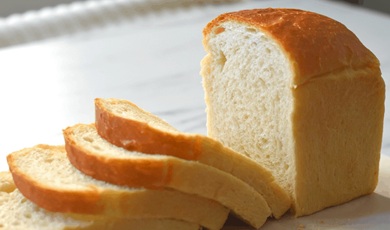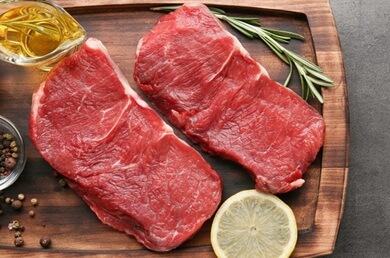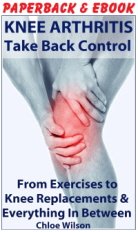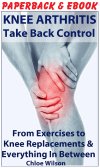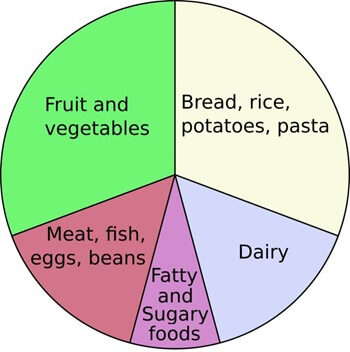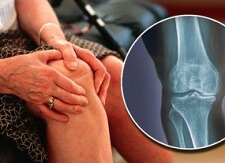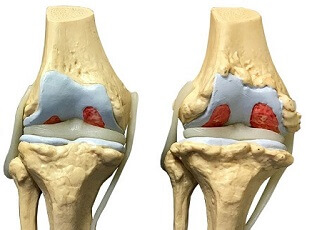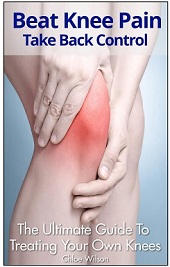- Home
- Knee Arthritis
- Food Choices
Arthritis Food Choices
The Good & Bad!
Written By: Chloe Wilson, BSc(Hons) Physiotherapy
Reviewed by: KPE Medical Review Board
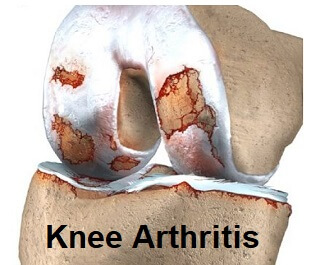
Arthritis food choices can make a real difference to your quality of life.
By making simple changes to your diet and knowing which foods to avoid with arthritis, you can reduce pain and inflammation.
Whilst you cannot cure arthritis by following a particular diet, making good arthritis food choices can have a big impact.
Arthritis is a collective term for around a hundred different conditions which all the common characteristic of inflammation of the joints.
Each one presents slightly differently, has different triggers and affects different people in different ways so there is no hard and fast rule on what you should or shouldn’t eat. However, many arthritis sufferers say they notice a change in their symptoms which they change their diet.
Why Is A Healthy Diet Important?
The main considerations when looking at arthritis food choices are that you are aiming to reduce inflammation and ensure a healthy body weight. These will help to reduce the stress and irritation of the affected joints.
- Inflammation: Arthritis diseases have one thing in common, inflammation. This leads to pain, stiffness and reduced function. Some foods increase inflammation, some help to relieve it.
- Body Mass Index: Being overweight places more force and strain through your joints, particularly your knees and back and excess body fat can even increase inflammation throughout your body by producing certain chemicals and hormones.
So when thinking about a healthy diet for arthritis, it is important to be aiming for a healthy, balanced diet combined with a healthy lifestyle and regular exercise. It is important to be aware that weight loss is only appropriate for people who are overweight. If you are thinking of changing your arthritis food diet, discuss this with your doctor or dietician first.
Arthritis Food To Avoid
With arthritis food choices are important and there are things you should avoid to help reduce inflammation and body weight:
1. Fried Food
Fried food is definitely one of those things to avoid if you have arthritis. The reason to avoid fried food (such as French fries, fried chicken, donuts) with arthritis is two-fold.
Firstly, when eaten in excess they increase body fat which places more stress through joints which can lead to wear and tear. Secondly, fried food is often cooked in hydrogenated oils, commonly known as trans fats (see below).
2. AGE’s (Advanced Glycation End Product)
AGE's tend to be found in processed food or foods cooked at high temps like BBQ or fried food. Cutting back on foods with AGE’s or reducing cooking temperatures can help reduce inflammation.
3. Sugars
If you have arthritis food and drinks with high sugar levels should be avoid e.g. fruit juice, cakes, soft drinks and sweets/candy. They raise your blood-sugar levels which causes an inflammatory reaction in your body flaring up arthritis.
Sugars are essentially empty calories i.e. they have no nutritional value. One can of soda contains more than the recommended daily allowance of 32g sugar.
4. Fats
One of the most important types of arthritis foods to avoid are those that contain the bad fats. These fall in to three categories:
- Saturated Fats: such as full fat dairy products e.g. butter, processed foods e.g. cakes, some vegetable oils e.g. palm oil and certain meats. They can increase inflammation around the body as well as increase your cholesterol levels
- Trans Fats: These are the worst kind of fat in arthritis food and whilst they are being used less frequently, they can sometime be found in processed food such as fried food, biscuits and sweets. They are also associated with high cholesterol levels. They tend to be labelled “hydrogenated oil”
- Polyunsaturated Fats: You may have heard that Omega-3 is a useful kind of fat found in things like oily fish, but omega-6 polyunsaturated fat from things like corn, sunflower or vegetable oil increases inflammation. It is often found in baked goods.
5. Refined Carbohydrates
Another arthritis food to avoid is anything made from refined carbohydrates such as white flour (plain or self-raising) or white rice. When white flour is made, the bran and germ parts are removed and they are the healthiest parts.
Refined carbohydrates also increase cytokine levels and other inflammatory compounds which aggravate arthritis. Switch instead to wholegrain rice, bread and cereals
6. Alcohol
Alcohol has been linked to flare ups in arthritis, particularly gout. Also like sugar, it is empty calories.
7. Salt / Sodium
Most people consume much more salt each day than the recommended amount of less than 2,300mg. High levels of sodium are often found in processed food and can cause high blood pressure.
Studies have recently found a link between high salt intake and auto immune response, where the body produces inflammatory cells and starts attacking itself such as rheumatoid arthritis and ankylosing spondylitis (arthritis of the spine).
8. Red Meat
Some studies have shown a link between eating lots of red meat and inflammatory arthritis, although more evidence is needed
The theory is that red meat tends to be fattier and the fats are easily turned into pro-inflammatory chemicals.
9. Large Portions
As we get older, we need smaller portions to maintain our weight and energy levels so we need to adjust how much we put on our plate to ensure we aren’t over eating our arthritis food choices.
10. Smoking
Not technically food or drink but tobacco has been linked with an increased risk of developing rheumatoid arthritis.
Check Out Our Book
All the info you need about knee arthritis, top tips, exercises & loads more.
Rated 4.4/5
Find Out More
Other thoughts on arthritis food to avoid
often include citrus fruits such as lemons and grapefruit and certain
vegetables such as potatoes, peppers, chilli’s and tomatoes. However
there is no scientific fact behind this and they are actually rich in
anti-oxidants which can actually help slow arthritis progression.
If you think that a certain food is aggravating your arthritis, the best way to check is a dietary “exclusion and challenge”. Cut the food type out of your diet for one month then reintroduce it. If your symptoms flare up in the next few days, it is likely that the food is a trigger.
It is always best to discuss arthritis food allergies and irritants with a dietician before deciding what food to avoid with arthritis without losing out on vital vitamins and minerals.
Arthritis Food That Can Help
As well as there being food to avoid with arthritis, there are things that you can eat which can help.
1. Healthy Balanced Diet
It is really important to ensure you are getting a healthy, balanced
diet when choosing arthritis food. The US Food & Drug
Administration recommends ensuring you are having some of all the
different food groups but splitting up your diet so it is:
- Two Thirds: Fruit and vegetables (particularly colourful ones as they are high in antioxidants) and whole grains e.g. brown rice and oatmeal
- One Third: Fat-free or low-fat dairy (e.g. skimmed milk) and lean protein (chicken, seafood, beans, nuts, seeds)
Fascinating Fact! Did you know, skimmed and semi-skimmed milk contains more calcium than full fat milk
2. Omega-3 Rich Foods
One of the best arthritis food options are things rich in omega-3. Omega-3 can help reduce inflammation in two ways by inhibiting enzymes that trigger inflammation and decreasing the synthesis of inflammation spreading chemicals such as cytokines. Good sources of omega-3 include oily fish e.g. salmon and sardines, walnuts, linseed, pumpkin seeds, soy beans and rapeseed (canola) oil.
Here are some other tops tips on choosing the best arthritis food:
- Best Vegetables: leafy green vegetables e.g. spinach, broccoli, sweet potato, squash, carrots, dried beans and peas
- Best Meats: seafood and fish – especially oily fish for omega-3
- Best Snacks: popcorn
What Else Can Help?
While it is important to make good arthritis food choices and it is helpful to know what food to avoid with arthritis, diet is only one aspect of treatment. Your choices on diet for arthritis should always be discussed with your doctor and used as an adjunct to other treatment, not as a replacement.
There are a number of other treatment options which can be more effective in reducing pain, inflammation and disability. You can find out more about these other options including exercise, supplements and injections in the Arthritis Treatment section.
You can also check out our book Knee Arthritis: Take Back Control. It is the top rated book on Knee Arthritis on Amazon with an average user review rating of 4.4/5. It's packed full of great information from exercises to knee replacements and everything in between. A perfect guide for anyone who is having a knee joint replacement
Please do remember, changing your diet is just one thing you can do to help reduce pain and it should be done in combination with other arthritis treatments such as exercises, supplements and injections rather than as a substitute.
Related Articles
Last Updated: May 21st, 2025
Next Review Due: May 21st, 2027

